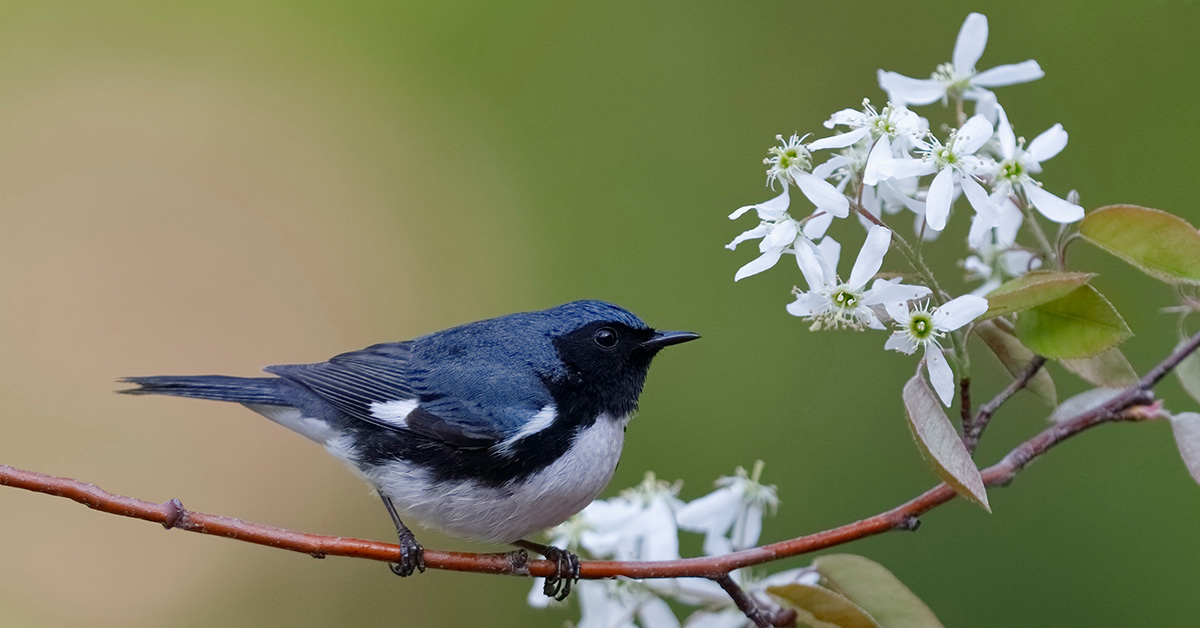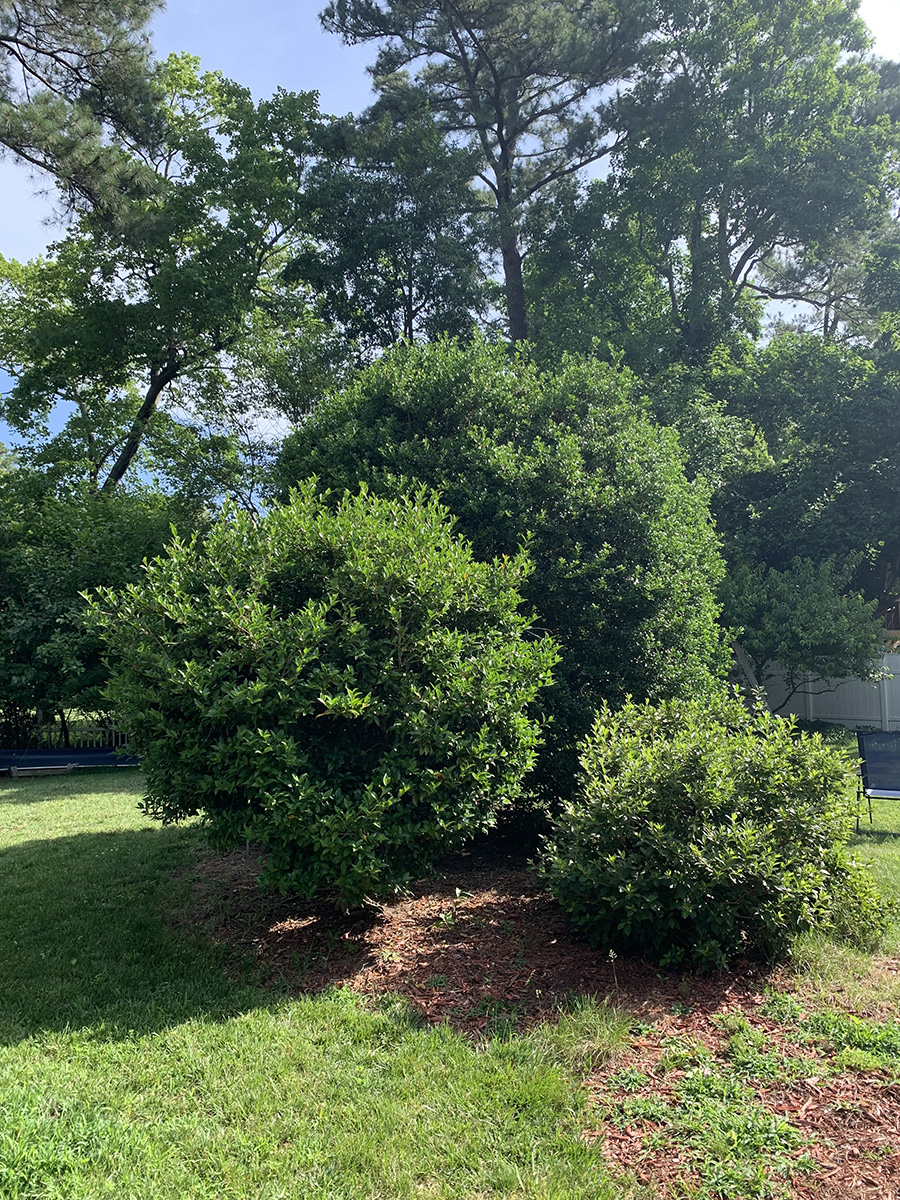
Serviceberry is a flowering bush that's used by a wide variety of wildlife and birds, such as this black-throated blue warbler. Photo by Shutterstock
By Stephen Living/DWR
Photos by Stephen Living/DWR
When we want to provide for nesting birds in our spaces we may default to adding a bird house. While a carefully selected and placed bird house may provide nesting opportunities for a small number of species (like eastern bluebirds or chickadees), one of the best ways to attract nesting songbirds is ensuring a healthy shrub layer as birdhouses are truly only preferred by cavity nesting species.
Many birds use shrubs for nesting. They can be really secretive and are careful not to draw attention to their nests. When autumn leaves fall, you might be surprised to find how many birds were nesting in your bushes and trees. Northern cardinal, chipping sparrow and Species of Greatest Conservation Need like eastern towhee, cray catbird and brown thrasher will all use the bushes in your yard.

These shrubs might not look like habitat from a distance…

But if you look close, you might find a bird’s nest!

Gray catbird nestlings in a nest in a shrub.
In addition to places to nest, shrubs provide protection from harsh weather and places to hide from predators (bonus points for evergreens like eastern red cedar or wax-myrtle). The flowers and leaves support pollinators and other native insects which in turn provide food for the birds and other wildlife.


